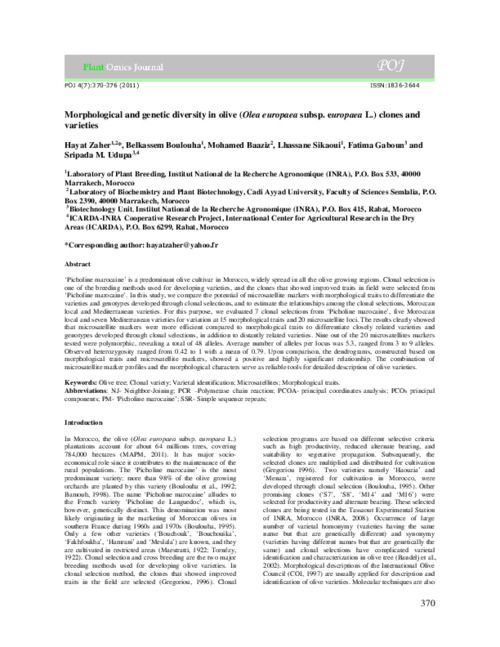Morphological and genetic diversity in olive (Olea europaea subsp europaea L.) clones and varieties
Abstract
'Picholine marocaine' is a predominant olive cultivar in Morocco, widely spread in all the olive growing regions. Clonal selection is one of the breeding methods used for developing varieties, and the clones that showed improved traits in field were selected from 'Picholine marocaine'. In this study, we compare the potential of microsatellite markers with morphological traits to differentiate the varieties and genotypes developed through clonal selections, and to estimate the relationships among the clonal selections, Moroccan local and Mediterranean varieties. For this purpose, we evaluated 7 clonal selections from 'Picholine marocaine', five Moroccan local and seven Mediterranean varieties for variation at 15 morphological traits and 20 microsatellite loci. The results clearly showed that microsatellite markers were more efficient compared to morphological traits to differentiate closely related varieties and genotypes developed through clonal selections, in addition to distantly related varieties. Nine out of the 20 microsatellites markers tested were polymorphic, revealing a total of 48 alleles. Average number of alleles per locus was 5.3, ranged from 3 to 9 alleles. Observed heterozygosity ranged from 0.42 to 1 with a mean of 0.79. Upon comparison, the dendrograms, constructed based on morphological traits and microsatellite markers, showed a positive and highly significant relationship. The combination of microsatellite marker profiles and the morphological characters serve as reliable tools for detailed description of olive varieties

